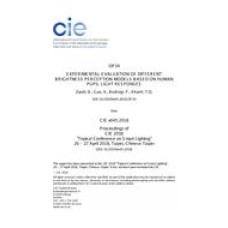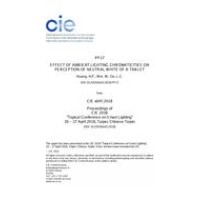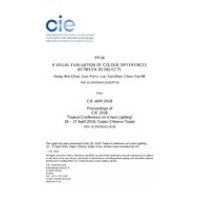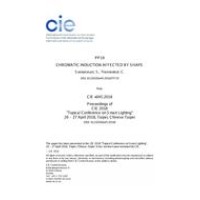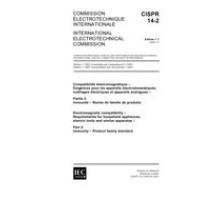EXPERIMENTAL EVALUATION OF DIFFERENT BRIGHTNESS PERCEPTION MODELS BASED ON HUMAN PUPIL LIGHT RESPONSES (OP34, 201-208)
- Secure PDF Files
- Conference Proceeding by Commission Internationale de L'Ecl
- Category: CIE
$21.20
$11.00
Since the discovery of the intrinsically photosensitive retinal ganglion cells, there has been a renewed view on the processes that lead to a light induced pupil dilatation. To predict the pupil diameter, a large number of models have been established which are in general based on the luminance as a light photometric parameter. In this work we investigate how the pupil responds to different polychromatic spectra at constant luminance and brightness according to models of Fotios et al. and Berman. The results indicate that especially under photopic conditions, the pupil diameter has significant differences between the used spectra. The use of the brightness model according to Fotios et al. improves this (F(2,22) = 87.76, p < .05.) compared to a constant luminance (F(2, 22) = 522.05, p < .05), but statistical differences still exist. Under mesopic conditions using the Berman-brightness-model no significant differences in pupil diameters can be determined with F(1.11, 7.78) = 1.61, p > .05.
 PDF
PDF
All of our standards document are available in PDF (Portable Document Format), an electronic, downloadable format.You will be able to download the file in your account downloads.
 Multi-User Access
Multi-User Access
After purchasing, you have the ability to assign each license to a specific user.
 Printable
Printable
At any time, you are permitted to make printed copies for your and your members' reference use.

